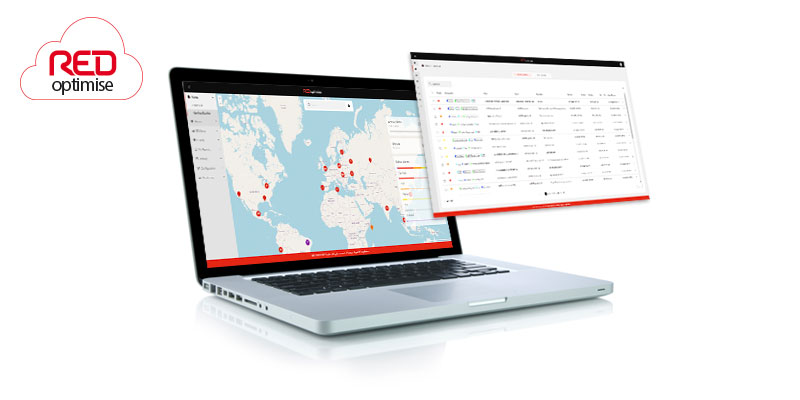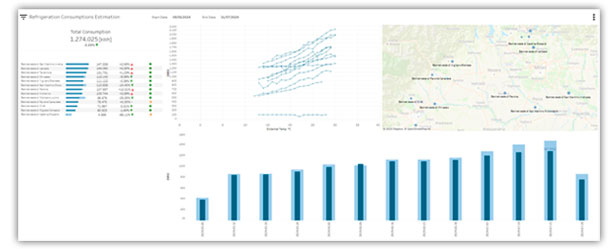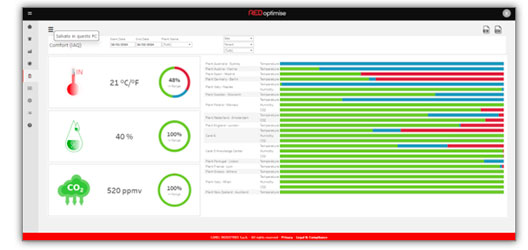Are you ready for the future?
Are you ready for the future?
In Europe, buildings account for 40% of energy consumption and 36% of CO2 emissions.
By using building energy management systems (BEMS), energy consumption and therefore costs can be reduced, and the energy efficiency objectives set by the EPBD (Energy Performance of Buildings Directive) can be achieved.
 BEMS systems are digital monitoring infrastructures, generally on the cloud, that centralise data and information so as to monitor and manage buildings. These systems increasingly use artificial intelligence (AI) to implement algorithms that can offer suggestions on how to improve energy efficiency and actively support the day-to-day activities of site managers and maintenance personnel, such as the configuration and maintenance of energy-intensive systems.
BEMS systems are digital monitoring infrastructures, generally on the cloud, that centralise data and information so as to monitor and manage buildings. These systems increasingly use artificial intelligence (AI) to implement algorithms that can offer suggestions on how to improve energy efficiency and actively support the day-to-day activities of site managers and maintenance personnel, such as the configuration and maintenance of energy-intensive systems.
Implementing AI on cloud monitoring portals brings the following benefits:
-
Energy optimisation and consequent reductions in energy costs
-
Planned and predictive maintenance with increased reliability and performance of field devices
-
Comparative analysis and suggestions
-
Greater sustainability
-
Better indoor comfort and safety
The evolution of digital monitoring portals
Cloud portals for monitoring buildings, thanks to their flexibility and scalability, represent the ideal solution for acquiring, centralising and interpreting a vast range and quantity of data from different devices and systems installed inside a building (temperature sensors, humidity, heating and air conditioning systems, refrigeration systems, lighting, etc.). Integrating AI into these portals offers the opportunity to analyse and process the data much more efficiently and precisely, identifying patterns and anomalies with the aim of optimising energy consumption and reducing CO2 emissions.
“RED optimise” is a cutting-edge site monitoring portal that uses advanced machine learning and AI models to optimise energy consumption and performance.
 RED optimise provides building managers a clear and detailed picture of the energy consumption and performance of individual devices, units and systems installed across multiple sites. The data and information, logged and always available on RED optimise, are used to populate dashboards that summarise performance in terms of energy and control efficiency. The different personnel involved in building management, through in-depth analysis and interpretation of useful data, can immediately implement preventive maintenance actions.
RED optimise provides building managers a clear and detailed picture of the energy consumption and performance of individual devices, units and systems installed across multiple sites. The data and information, logged and always available on RED optimise, are used to populate dashboards that summarise performance in terms of energy and control efficiency. The different personnel involved in building management, through in-depth analysis and interpretation of useful data, can immediately implement preventive maintenance actions.
For example, the energy consumption monitoring dashboard offers a complete overview of the energy consumption of different technologies used in the field, as well as comparison across different periods. It helps find correlations and identify the best- and worst-case situations. Furthermore, normalisation of the data (based on floor area and outside temperature) helps immediately define the systems or areas where action needs to be taken.

The dashboard for analysis of HVAC system consumption analyses energy consumption independently of the outside temperature or store size, thus allowing effective comparison of energy consumption between systems with different characteristics or in different locations.
The dashboard for preventive estimation of refrigeration power consumption acquires outside temperature and energy consumption data, and using AI, continuously analyses historical data in order to estimate energy consumption based on recorded outside conditions, and compare these values against actual consumption. Consequently, it can be used to assess any actions needed to bring energy consumption back within the expected range, and to verify the energy savings achieved.

The dashboard dedicated to indoor air quality offers a global and single-site view of the average temperature, humidity and CO2 values, as well as a quality indicator created based on the trends in these values with respect to absolute or relative thresholds (set points).

RED optimise - “Site optimisation” performance
The personnel responsible for electricity costs often do not have the necessary skills to implement actions on the various technologies available to optimise such costs. To achieve global efficiency, the support of professionals with the right experience in system and building operating dynamics is needed.

“RED optimise” is the tool that can help you provide optimisation services, through:
-
detailed analysis of data for each site,
-
comparison of overall performance against other sites,
-
suggestions on correcting anomalies and inefficiencies
-
adjustments or changes to the configuration of field devices,
-
etc.
These tools, applied over just a few weeks, can help achieve energy efficiency that can then be replicated across all connected sites. The increase in overall performance, in addition to being visible on the RED optimise dashboards, will lead to a concrete reduction in electricity costs.
